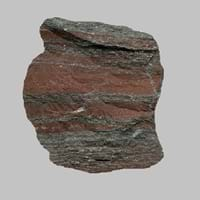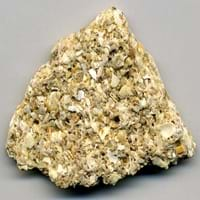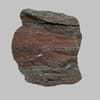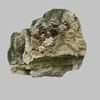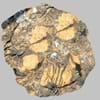Jaspillite and Coquina
Definition
Definition
Jaspillite is an iron rich chemically formed rock which is common in banded iron formation rocks
Coquina is a sedimentary rock that is composed either wholly or almost entirely of the transported, abraded, and mechanically-sorted fragments of the shells of molluscs, trilobites, brachiopods, or other invertebrates
History
Origin
Western Australia, Minnesota
European Foreland Basins
Discoverer
Unknown
Unknown
Etymology
From Jaspilite (Mineral), a compact siliceous rock which resembles jasper
From Concha (Latin)+ Coquina(Spanish) +conch(English)= Couquina (mid 19th century)
Class
Sedimentary Rocks
Sedimentary Rocks
Sub-Class
Durable Rock, Soft Rock
Durable Rock, Soft Rock
Family
Group
Not Applicable
Not Applicable
Other Categories
Coarse Grained Rock, Opaque Rock
Coarse Grained Rock, Opaque Rock
Texture
Texture
Banded, Trellis
Clastic
Color
Red, Reddish Brown
Beige, Buff, Orange
Maintenance
Less
More
Durability
Durable
Non-Durable
Water Resistant
No
No
Scratch Resistant
No
No
Stain Resistant
No
No
Wind Resistant
No
No
Acid Resistant
No
No
Appearance
Banded and Glassy
Layered, Banded, Veined and Shiny
Uses
Architecture
Interior Uses
Decorative Aggregates, Interior Decoration
Decorative Aggregates, Homes, Hotels, Interior Decoration
Exterior Uses
As Facing Stone, Garden Decoration, Paving Stone
Garden Decoration, Office Buildings
Other Architectural Uses
Curbing
Curbing
Industry
Construction Industry
As a Flux in the Production of Steel and Pig Iron, As a Sintering Agent in Steel Industry to process Iron Ore, As Dimension Stone, Cement Manufacture, for Road Aggregate, Making natural cement, Manufacture of Magnesium and Dolomite Refractories
Building houses or walls, Construction Aggregate
Medical Industry
Not Yet Used
Not Yet Used
Antiquity Uses
Artifacts, Jewellery, Monuments
Artifacts, Monuments, Sculpture, Small Figurines
Other Uses
Commercial Uses
Creating Artwork, Jewelry
Creating Artwork
Types
Types
Algoma-type , Lake Superior-type and Superior-type
Not Available
Features
Is one of the oldest rock
Available in Lots of Colors and Patterns, Is one of the oldest rock
Archaeological Significance
Monuments
Used
Used
Famous Monuments
Data Not Available
Data Not Available
Sculpture
Not Yet Used
Used
Famous Sculptures
Not Applicable
Data Not Available
Pictographs
Used
Used
Petroglyphs
Used
Used
Figurines
Not Yet Used
Used
Fossils
Present
Present
Formation
Formation
Jaspillite is a type of sedimentary rock which is formed by the compaction and sedimentation of pieces of broken or weathered rocks and minerals.
Coquina is a sedimentary rock which is formed when billions of small clam-like seashell, called Coquina, or cockleshell are die and hence are deposited, buried and turns into a rock when pressure is applied.
Composition
Mineral Content
Coesite, Quartz, Sand
Apatite, Augite, Bronzite, Calcite, Chert, Chlorite, Clay Minerals, Epidote, Feldspar, Garnet, Micas, Muscovite or Illite
Compound Content
Fe, Iron(III) Oxide, Silicon Dioxide
CaO, Carbon Dioxide, Iron(III) Oxide, MgO
Transformation
Metamorphism
No
No
Types of Metamorphism
Not Applicable
Not Applicable
Weathering
Yes
Yes
Types of Weathering
Biological Weathering, Chemical Weathering
Biological Weathering, Chemical Weathering, Mechanical Weathering
Erosion
Yes
Yes
Types of Erosion
Chemical Erosion, Coastal Erosion
Coastal Erosion, Sea Erosion, Water Erosion, Wind Erosion
Properties
Physical Properties
Hardness
3
1-2
Grain Size
Large and Coarse Grained
Coarse Grained
Fracture
Conchoidal
Irregular
Streak
White
White
Porosity
Very Less Porous
Highly Porous
Luster
Earthy
Dull to Vitreous to Submetallic
Compressive Strength
230.00 N/mm2
6
Not Available
Cleavage
Imperfect
Not Available
Toughness
Not Available
Not Available
Specific Gravity
5.0-5.3
1.10-2.24
Transparency
Translucent to Opaque
Opaque
Density
0-5.7 g/cm3
2.8-2.9 g/cm3
Thermal Properties
Specific Heat Capacity
3.20 kJ/Kg K
1
Not Available
Resistance
Heat Resistant, Impact Resistant, Wear Resistant
Heat Resistant, Impact Resistant, Pressure Resistant, Wear Resistant
Reserves
Deposits in Eastern Continents
Asia
Russia
Not Yet Found
Africa
Not Yet Found
Not Yet Found
Europe
Ukraine
United Kingdom
Others
Not Yet Found
Not Yet Found
Deposits in Western Continents
North America
Canada, USA
USA
South America
Brazil
Not Yet Found
Deposits in Oceania Continent
Australia
Western Australia
Not Yet Found
All about Jaspillite and Coquina Properties
Know all about Jaspillite and Coquina properties here. All properties of rocks are important as they define the type of rock and its application. Jaspillite and Coquina belong to Sedimentary Rocks.Texture of Jaspillite is Banded, Trellis whereas that of Coquina is Clastic. Jaspillite appears Banded and Glassy and Coquina appears Layered, Banded, Veined and Shiny. The luster of Jaspillite is earthy while that of Coquina is dull to vitreous to submetallic. Jaspillite is available in red, reddish brown colors whereas Coquina is available in beige, buff, orange colors. The commercial uses of Jaspillite and Coquina are creating artwork, jewelry.
|
||
|
||
|
